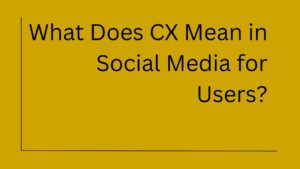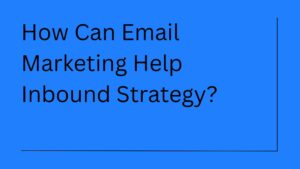If there’s one channel that’s stood the test of time in the marketing world, it’s email. People may scroll past social posts, skip YouTube ads, or ignore banners, but their inbox? That’s sacred space. Yet, it’s also crowded.
We’re talking about inboxes flooded with newsletters, promotional offers, abandoned cart reminders, sale alerts, the works. So how do you break through that noise? Better yet, how do you craft an email that doesn’t just get opened but actually gets read, clicked, and acted upon?
Let’s dig in. Here’s a breakdown, realistic, no fluff, on how to write a marketing email that boosts your engagement rate and doesn’t get lost in the pile.
How To Write a Good Marketing Email in 10 Steps (With Examples)
1. Start with the Email Subject Line That Earns Attention
This is the gatekeeper. If your subject line doesn’t catch their eye, the rest of your email could be Pulitzer-worthy, and it still wouldn’t matter. People skim subject lines in fractions of a second like a reflex. So make it count.
What works?
- Curiosity: “You’re missing out on this, just saying…”
- Personalization: “Hey Sarah, still thinking about this?”
- Urgency: “Today only: 50% off sitewide”
- Relevance: “A quick tip for better sleep tonight”
But here’s the thing: not every subject line needs to scream. Sometimes, subtlety works better. A plain, honest subject line like “Just checking in” might outperform the flashy one. It really depends on your audience, and honestly, some A/B testing helps more than guesswork here.
Also, skip clickbait. Sure, it gets the open. But if your email doesn’t deliver on the promise? You’ll lose trust faster than you gained attention.
2. Get to the Marketing Point of View, but Don’t Be Robotic About It
People don’t open marketing emails for storytelling or suspense. They open them because they think they might get something out of them. That doesn’t mean you need to be cold or salesy right off the bat, but it does mean you should respect their time.
So get to the point, but don’t be boring.
Avoid intros like, “We at XYZ Inc. are proud to present our latest initiative in delivering high-quality…” Stop. Just stop. Nobody talks like that.
Try something more grounded:
“We know your mornings are busy, so we made something to simplify breakfast and save you money, too.”
It’s warm, focused, and shows value within the first line.
That’s the balance you’re after. Be human. Be clear. And most of all, be helpful.
3. Know Who You’re Writing The Marketing Email To (Like, Really Know Them)
This part often gets skipped, but it’s actually everything.
A generic email is easy to spot. You know the kind: “Dear customer, check out our latest updates.” It’s vague, soulless, and forgettable. But when an email feels like it was written just for you? That’s when magic happens.
So ask yourself:
- Who is this person?
- What do they care about?
- What keeps them up at night?
- What would make their day easier, better, cheaper, faster, more fun?
Even if you don’t have deep customer insights, just imagining a single reader (a real one, like your coworker, your aunt, or your gym buddy) can guide your tone and focus.
If your product solves a problem, highlight that problem like it’s their pain point not just a market trend. If your brand has personality, let that show. Don’t sanitize it out.
4. Write Emails Like You Talk Then Polish It (Lightly)
Here’s a trick: write your first draft like you’re talking to someone over coffee. Casual, maybe even a little messy. The goal is to sound natural, not like a brochure.
Then, go back and clean it up. Remove the fluff, tighten the language, and cut any wandering tangents. But don’t polish so much that it feels stiff again. Leave in the occasional “maybe,” “kind of,” or “honestly,” those little imperfect markers make it feel like a real human wrote it.
For example, instead of saying:
“We are excited to announce a new feature that improves customer satisfaction.”
Try:
“We just added something new we think you’ll actually use. It’s small, but kind of a big deal.”
Same message. Way more relatable.
5. Use a Single, Clear CTA And Make It Obvious
This is crucial. If your email has more than one main call to action (CTA), you’re making your reader work harder than they should. People don’t want options in their inbox. They want clarity.
Should they:
- Read a blog post?
- Buy a product?
- Sign up for a webinar?
- Download a guide?
Pick one. The rest can wait.
And make the CTA button stand out visually, but don’t overdo it. A simple “Try it now” or “See what’s new” is often better than “Unlock your exclusive transformational toolkit.” People don’t need drama. They need direction.
Also, don’t hide the CTA at the bottom. Place it where it makes sense. Sometimes that’s after the first paragraph, especially if your message is short.
6. Add Visual Breathing Room To Your Email Template
Even the best copy falls flat if the email looks like a wall of text. That’s just human nature. If it looks dense, it feels hard, and people skip hard things when they’re checking email between meetings or while waiting for coffee.
Here’s what helps:
- Short paragraphs (2–3 lines max)
- Bullet points for lists
- Images that support your message, not just filler
- White space. Seriously, white space is underrated.
Design plays a huge role in engagement. So even if you’re a copywriter, it pays to think visually. If you wouldn’t read it, chances are… neither will your reader.
Design plays a huge role in engagement. So even if you’re a copywriter, it pays to think visually. The ease with which you can implement these design elements, from simple formatting to responsive templates, is often determined by the email newsletter software you choose and utilize. If you wouldn’t read it, chances are… neither will your reader.
7. Make It Feel Personal (Without Being Creepy)
Personalization is more than just using a first name in the greeting. It’s about relevance. If you know the reader recently bought something? Reference it. If they haven’t opened your last 5 emails? Maybe try a different tone or subject line.
But here’s a warning: go easy on the hyper-targeted stuff. Just because you can mention their location, device, or recent click doesn’t mean you should. When personalization feels too invasive, it does the opposite; it pushes people away.
Instead, keep it natural:
“We noticed you checked out our fall collection last week. Here’s something we think you’ll love.”
Simple, not stalker-y.
8. Don’t Forget the Preview Email Text
Ah, the forgotten hero of email marketing. You know that little gray text next to your subject line in your inbox? That’s preview text, and it matters.
It’s your second chance to hook them.
Use it to expand on your subject line, tease the content, or simply be honest. Don’t waste it with default text like “Can’t see this email? View in browser.”
Example:
- Subject: “Big news: it’s finally here”
- Preview: “Say hello to the feature you’ve been waiting for…”
That combo increases curiosity and encourages the open.
9. Test, Tweak, Repeat
No two audiences behave exactly the same. What works for a fashion brand won’t necessarily work for a software company.
So test:
- Subject lines (questions vs. statements)
- CTA wording (“Try free” vs. “Get started”)
- Send time and frequency
- Tone (funny vs. formal)
But here’s the thing: don’t test everything at once. Small, isolated changes help you learn what’s actually working.
Track open rates, click rates, and reply rates (if relevant). And don’t get discouraged by a low-performing email. One flop doesn’t mean your strategy’s broken, it just means you’ve got data to learn from.
10. Give Value First. Always.
This is the golden rule. People engage with emails that benefit them. Not because they owe you their attention. Not because they like your brand. Because it helps them in some small (or big) way.
That value could be:
- A discount
- A useful tip
- A free resource
- A new product they’ll actually use
- Even just a fun, two-minute read that makes their day better
Before you hit send, ask yourself: Would I find this email worth my time? If the answer isn’t a hard yes, rewrite it.
Final Thought
At the end of the day, writing a marketing email that gets high engagement isn’t about clever words or shiny buttons. It’s about empathy. Thinking like the person on the other side of the screen.
They’re busy. They’re selective. And they don’t owe you anything. But if you respect their time, speak to their needs, and make things easy? You’ll see the difference not just in opens or clicks, but in real engagement.
Because honestly, the best marketing emails don’t feel like marketing at all.






2 thoughts on “How to Write a Marketing Email for a High Engagement Rate?”
Converting a passerby into a qualified and loyal sale needs well-crafted content copy, and emails stand out in the way in terms of conversion. Thanks for educating from a point of view rather than just showing off your expertise.
Naturally, I like the way you blog, and it’s no surprise why email marketing is still a direct marketing method to reach users, and it’s why many search for better resources that help them write proper business emails. For now, I can congratulate you, and I will surely come again.